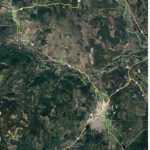Home »

43 species tallied in Kimberley area bird count
On January 4, the 120th Christmas Bird Count was held in the Kimberley Count Circle. It was the 22nd consecutive year of this event.

Counting on just one day provides a snapshot of what is in the defined area. Of course, several variables come into play. The weather, the number and expertise of observers, and a certain amount of luck all influence the results. Many birds are missed because they move around and we are not at the right place at the right time. The circle, with a diameter of 24 kilometres, is a large area and difficult to thoroughly study with limited observers and time. However, the area is defined and the time of year is constant, so the data gathered over time is quite useful.
The circle is centred to the east of Kimberley and extends from Wycliffe to Wasa, and from west of Kimberley to Bummer Flats. The day was rather mild, with light to moderate snow squalls in the morning, followed by settled conditions. Wasa Lake was frozen over, while Mark Creek and Cherry Creek were partially open. St. Mary River and Kootenay River were open as well. Sixteen birders went into the field; each team of four studied a defined quadrant. Eight feeder/yard counters watched the immediate area near their homes.
We recorded 43 species on count day, close to the 42 species average during the past 22 years. In addition, three days prior to and following count day comprise “count week.” Count week sightings are useful because these species can be added to our final report submitted to Bird Studies Canada and National Audubon Society. Here, the number of count week individuals is not recorded.
When all sightings were recorded, the total number of birds amounted to 1,342, about half the average of 2,405. Unsettled morning weather likely contributed, along with absent species and ongoing population declines. No new species or rarities were seen.

For a very detailed list of count numbers and abundance rating, please go to our fine website www.rockymountainnaturalists.org and click on Christmas Bird Counts. Thanks to Dianne Cooper for her major role regarding organization and compilation.
Here are some comments of interest. Bohemian Waxwings were the most numerous species as usual, but at one sixth of average, were the third lowest count in 22 years. Next most numerous were Black-capped Chickadees, but their numbers were down too.
Common Redpolls, an “irruptive” (cyclical) species, and Pine Siskins were very low. Evening Grosbeaks, often numbering 50 to 200, were absent again this year. Their population is known to be decreasing throughout North America. Red Crossbills were also missed despite a new maximum recorded last year. We hope that these species have been found elsewhere. Also low were Clark’s Nutcrackers at about one sixth of average, as were Dark-eyed Juncos. Curiously, a new maximum number of Juncos were counted last year in Cranbrook.
Missed altogether included Northern Pygmy-owl, Townsends Solitaire and Golden-crowned Kinglet; these birds are difficult to find at any time.
During count week, it was fortunate to locate Snow Bunting, American Tree Sparrow and Northern Shrike.

Of the 81 species recorded during the 22-year span of the Kimberley count, 38 species have been seen on only half of the counts. These birds are rarely seen in winter, may have naturally low numbers or may be more common at other times. Of these, we found Ruffed Grouse, Northern Harrier, Rough-legged Hawk, Mourning Dove and Belted Kingfisher. Aren’t these names wonderful?
Five species showed maximum high counts. Eurasian Collared-dove continue to increase, 2.5 times greater than two years ago. Bald Eagle numbers also continue to rise. Several Red-tailed Hawks evidently overwinter here. American Goldfinch are slowly increasing and can be found on both sides of the St. Mary River where they are counted on either the Cranbrook or Kimberley counts. Pygmy Nuthatch also increase slowly.
Several introduced species continue to be reported. Eurasian Collared-dove, Rock Pigeon, European Starling and House Sparrow are successful.
Above average this year include Common Goldeneye, Wild Turkey, Pileated Woodpecker and Black-billed Magpie. Below average are the Black-capped Chickadee and White-breasted Nuthatch. These nuthatches peaked 14 years ago and are now hard to find. The Cranbrook count has not recorded them for the past three years.

Activity at yards and feeders seemed slow again this year, partially due to blustery conditions. Except for low numbers of Common Redpoll, Pine Siskin and absence of Evening Grosbeak, the seed-eating birds and woodpeckers were close to average.
An average number of American Dipper were counted along creek edges. Dippers have been missed only once in 22 years. Red-winged blackbirds occurred in normal numbers, following last year’s unusually large number of 75.
If you want to observe and learn more about local birds throughout the year, you can join the Rocky Mountain Naturalists on a regular basis. We go to different areas on Wednesday mornings. A plan is made and you can arrange to be notified by visiting rockymountainnaturalists.org . This is a chance to not only see a wide variety of birds, but also to enjoy beautiful East Kootenay locations and learn birding skills.
So far, in January 2020, over 70 species have been reported in the East Kootenay. Since early November 2019, we’ve recorded about 110 species. And, since early March of 2019, approximately 240 species have been seen. During recent decades, 303 species have been verified. The East Kootenay is indeed a rich, diverse, unique region for birds and other wildlife.
 Lead image: A rough-legged hawk. Photos submitted by fellow Naturalist Lyle Grisedale
Lead image: A rough-legged hawk. Photos submitted by fellow Naturalist Lyle Grisedale
Daryl Calder on behalf of Rocky Mountain Naturalists







